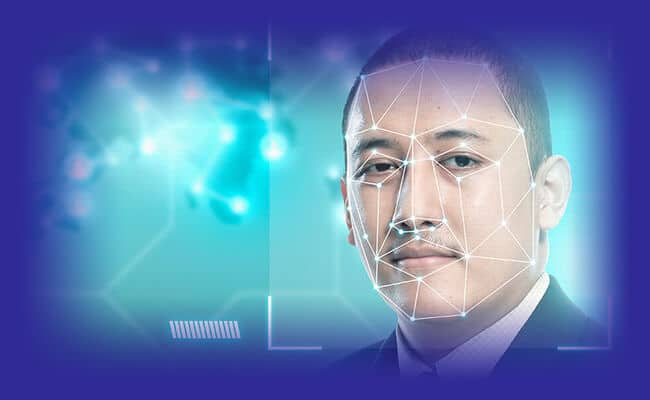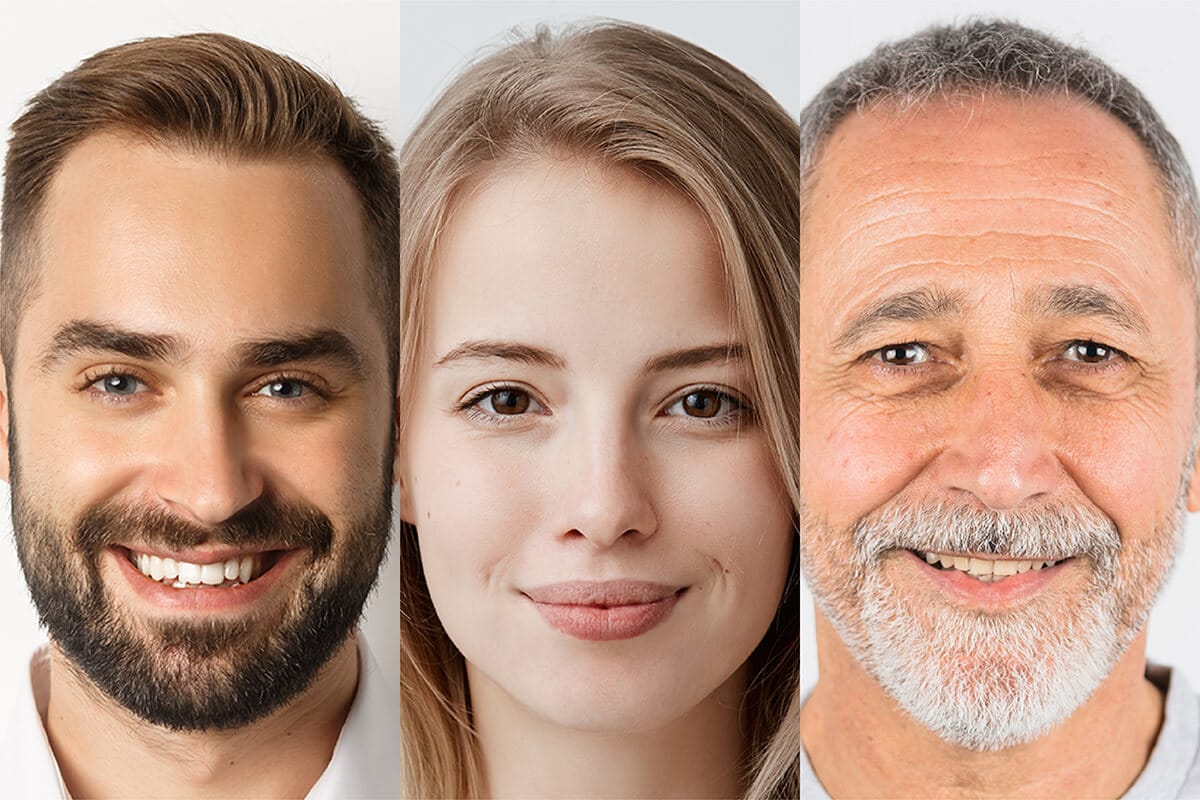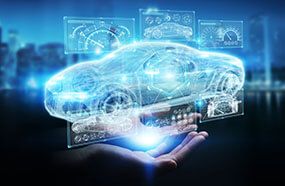- What We Do
-
-
-
Speciality
-
-
-
- Off-the-shelf Data
-
- Solutions
- Platform
- Company
Speciality
Facial Recognition
Optimize your facial recognition models for accuracy with the best quality image data

Today, we are at the dawn of the next-generation mechanism, where our faces are our passcodes. Through the recognition of unique facial features, machines can detect if the person trying to access a device is authorized, match CCTV footage with actual images to track felons and defaulters, reduce crime in retail stores, and more. In simple words, this is the technology that scans an individual’s face to authorize access or execute a set of actions it is designed to perform. At the backend, tons of algorithms and modules work at breakneck speeds to execute calculations and match facial features (as shapes and polygons) to accomplish crucial tasks.

A person’s face looks different from each angle, profile, and perspective. A machine should be able to accurately tell if it is the same person regardless of whether the individual stares at the device regardless from a front-neutral perspective or right-below perspective.

A model must precisely tell if a person is smiling, frowning, crying, or staring by looking at them or their images. It should be able to understand that eyes could look the same when a person is either surprised or scared and then detect the precise expression error-free.

Visible differentiators like moles, scars, fire burns, and more are differentiators that are unique for individuals & should be considered by AI modules to train and process faces better. Models should be able to detect them and attribute them as facial features and not just skip them.
Whether you need face image data collection (consisting of different facial features, perspectives, expressions or emotions), or face image data annotation services (for tagging visible differentiator, facial expressions with appropriate metadata i.e. smiling, frowning, etc.,) our contributors from across the globe can meet your training data needs fast and at scale.

For your AI system to accurately deliver results, it has to be trained with thousands of human facial datasets. The more the volume of facial image data, the better. That’s why our network can help you source millions of datasets, so your facial recognition system is trained with the most appropriate, relevant, and contextual data. We also understand that your geography, market segment, and demographics could be very specific. To cater to all your needs, we provide custom face image data across diverse ethnicities, age groups, races, and more. We deploy stringent guidelines on how face images should be uploaded to our system in terms of resolutions, file formats, illumination, poses, and more.

When you acquire quality face images, you’ve completed only 50% of the task. Your facial recognition systems would still give you pointless results (or no results at all) when you feed acquired image datasets into them. To initiate the training process, you need to get your face image annotated. There are several facial recognition data points that have to be marked, gestures that have to be labelled, emotions and expressions that have to be annotated and more. At Shaip, we can assist you with annotated facial images with our facial landmark recognition techniques. All intricate details and aspects of facial recognition are annotated for accuracy by our own in-house veterans, who have been into the AI spectrum for years.
Our team of experts, can collect and annotate facial images on our proprietary image annotation platform, however, the same annotators after a brief training can also annotate facial images on your in-house image annotation platform. Within a short span, they will be able to annotate thousands of facial images based on stringent specifications and with the desired quality.
Regardless of your idea or market segment, you would need abundant volumes of data that need to be annotated for trainability. To get a quick idea of some of the use cases you could reach out to us, here’s a list.
Background
In an effort to enhance the accuracy and diversity of AI-driven facial recognition models, a comprehensive data collection project was initiated. The project focused on gathering diverse facial images and videos across various ethnicities, age groups, and lighting conditions. The data was meticulously organized into several distinct datasets, each serving specific use cases and industry requirements.
Dataset Overview
| Details | Use Case 1 | Use Case 2 | Use Case 3 |
|---|---|---|---|
| Use Case | Historical Images of 15,000 Unique Subjects | Facial Images of 5,000 Unique Subjects | Images of 10,000 Unique Subjects |
| Objective | To build a robust dataset of historical facial images for advanced AI model training. | To create a diverse facial dataset specifically for the Indian and Asian markets. | To collect a wide variety of facial images capturing different angles and expressions. |
| Dataset Composition | Subjects: 15,000 unique individuals. Data Points: Each subject provided 1 enrollment image + 15 historical images. Additional Data: 2 videos (indoor and outdoor) capturing head movements for 1,000 subjects. | Subjects: 5,000 unique individuals. | Subjects: 10,000 unique individuals Data Points: Each subject provided 15-20 images, covering multiple angles and expressions. |
| Ethnicity and Demographics | Ethnic Breakdown: Black (35%), East Asian (42%), South Asian (13%), White (10%). Gender: 50% Female, 50% Male. Age Range: Images cover up to the last 10 years of each subject’s life, focusing on individuals aged 18+. | Ethnic Breakdown: Indian (50%), Asian (20%), Black (30%). Age Range: 18 to 60 years old. Gender Distribution: 50% Female, 50% Male. | Ethnic Breakdown: Chinese ethnicity (100%). Gender: 50% Female, 50% Male. Age Range: 18-26 years old. |
| Volume | 15,000 enrollment images, 300,000+ historical images, and 2,000 videos | 35 selfies per subject, totaling 175,000 images. | 150,000 – 200,000 images. |
| Quality Standards | High-resolution images (1920 x 1280), with strict guidelines on lighting, facial expression, and image clarity. | Diverse backgrounds and attire, no face beautification, and consistent image quality across the dataset. | High-resolution images (2160 x 3840 pixels), precise portrait ratio, and varied angles and expressions. |
| Details | Use Case 4 | Use Case 5 | Use Case 6 |
|---|---|---|---|
| Use Case | Images of 6,100 Unique Subjects (Six Human Emotions) | Images of 428 Unique Subjects (9 Lighting Scenarios) | Images of 600 Unique Subjects (Ethnicity-Based Collection) |
| Objective | To gather facial images depicting six distinct human emotions for emotion recognition systems. | To capture facial images under various lighting conditions for training AI models. | To create a dataset that captures the diversity of ethnicities for enhanced AI model performance. |
| Dataset Composition | Subjects: 6,100 individuals from East and South Asia. Data Points: 6 images per subject, each representing a different emotion. Ethnic Breakdown: Japanese (9,000 images), Korean (2,400), Chinese (2,400), Southeast Asian (2,400), South Asian (2,400). | Subjects: 428 Indian individuals. Data Points: 160 images per subject across 9 different lighting conditions. | Subjects: 600 unique individuals from diverse ethnic backgrounds. Ethnic Breakdown: African (967 images), Middle Eastern (81), Native American (1,383), South Asian (738), Southeast Asian (481). Age Range: 20 to 70 years old. |
| Volume | 18,600 images | 74,880 images | 3,752 images |
| Quality Standards | Strict guidelines on facial visibility, lighting, and expression consistency. | Clear images with consistent lighting, and a balanced representation of age & gender. | High-resolution images with a focus on ethnic diversity and consistency across the dataset. |
12k images with variations around head pose, ethnicity, gender, background, angle of capture, age, etc. with 68 landmark points

22k facial video dataset from multiple countries with multiple poses for facial recognition models

2.5k+ images from 3,000+ people. Dataset contains images of group of 2-6 people from multiple geographies

20k videos of faces with masks for building/training Spoof Detection AI model

Offering facial recognition training data to multiple industries
Facial recognition is the current rage across segments, where unique use cases are being tested and rolled out for implementations. From tracking child traffickers and deploying bio ID in organization premises to studying anomalies that could go undetected to the normal eye, facial recognition is helping businesses & industries in a myriad of ways.

Boost autonomous driving capabilities with facial recognition datasets designed for driver monitoring and in-car safety systems

Enhance customer experience with facial recognition datasets for personalized in-store services and seamless checkout processes.

Deliver personalized shopping experiences and improve customer authentication in eCommerce platforms.

Empower patient identification and diagnostic accuracy with specialized facial recognition datasets for healthcare applications

Elevate guest services with facial recognition datasets for seamless check-ins and personalized experiences in hospitality.

Strengthen security measures with facial recognition datasets optimized for surveillance, threat detection, and defense applications.
Dedicated and trained teams:
Highest process efficiency is assured with:
The patented platform offers benefits:
Computer vision is all about making sense of the visual world to train computer vision applications. Its success completely boils down to what we call image annotation – the fundamental process behind the technology that makes machines make intelligent decisions and this is exactly what we are about to discuss and explore.
Humans are adept at recognizing faces, but we also interpret expressions and emotions quite naturally. Research says we can identify personally familiar faces within 380ms after presentation and 460ms for unfamiliar faces. However, this intrinsically human quality now has a competitor in artificial intelligence and Computer Vision.
Human beings have the innate ability to distinguish & precisely identify objects, people, & places from photographs. However, computers don’t come with the capability to classify images. Yet, they can be trained to interpret visual information using computer vision applications & image recognition technology.
Empowering teams to build world-leading AI products.
Let’s discuss your Training Data needs for Facial Recognition Models
Facial recognition is a biometric technology that identifies or verifies a person’s identity by analyzing unique facial features from images or videos.
It works by capturing an image, analyzing facial features, and matching them against a database to identify or verify a person.
Facial recognition is essential for AI/ML projects as it enables applications like security, authentication, and personalized customer experiences.
Industries such as security, healthcare, retail, automotive, and hospitality use these datasets for applications like surveillance, access control, and personalization.
Datasets are collected from diverse sources, ensuring representation across demographics, age groups, and lighting conditions.
Annotation involves labeling facial features, expressions, and unique identifiers like scars and moles for accurate AI training.
Yes, all datasets comply with global privacy standards like GDPR and ensure data is anonymized and ethically sourced.
Yes, datasets can be tailored for specific demographics, industries, or conditions based on project requirements.
Quality is ensured through strict guidelines on image resolution, lighting, and expert validation for accuracy and consistency.
Yes, datasets are scalable and can support projects of any size with millions of images.
Datasets are provided in standard formats with metadata, making them easy to integrate into AI workflows.
Flexible licensing options are available, including off-the-shelf or customized datasets.
The cost depends on the size, customization, and licensing needs of the dataset. Contact us for the best quote.
Delivery timelines vary based on project size and complexity, but are designed to meet deadlines efficiently.
They improve AI model accuracy by providing high-quality, diverse data that enables reliable facial recognition across various conditions.